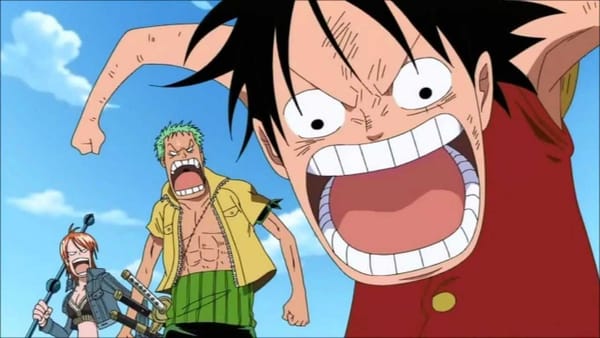Eiichiro Oda: creator of One Piece and richest manga artist in history. A hyper obsessive perfectionist manga artist that doesn't sleep or eat or drink because of his love for his art.
Surely, when someone works that hard, there's no way they would've had any struggles getting to the top - after all, he could just outwork everyone.
Surely.
Saved From the Brink
How One Piece almost never existed.
It's weird to think that manga series that have ran as long as One Piece were at any danger of being cancelled or otherwise not even written. But as the story goes for Spy x Family, Captain Tsubasa, Made in Abyss, the same applies to One Piece.
As I went over in my Oda biopic, the One Piece pirate concept, even though he came up with it way back when he was a child, was actually his last resort after an embarrassing streak of failures where he couldn't get anything approved by Shueisha. It wasn't made any better than the fact that Oda came into the manga industry thinking he was hot shit, but got reality checked into the ground constantly over his years of actually working as a professional.
Which, now that I think about it, begs the question:
Hot Shit? Or Dog Shit?
The Journey Begins:
Oda's ginormous ego coming into the manga world was, even though it was way overblown, not really surprising given how he got into all of it in the first place.
Having had a dad who would oil paint for fun, Oda had decided at four to become a manga artist, though not for some particular calling towards manga making or anything, but just because he didn't want to actually do real work -
"I got very jealous when I read Kaibutsu-Kun. People do this? I don't have to do work even when I grow up!"
That said, it's one thing to decide to do something, it's another to keep doing it - and having seen his fair share of manga like the a Kaibutsu-Kun, Dragon Ball, and a show called Vicky the Viking (who went on adventures on the open seas...), little Oda wasn't without inspiration. In fact one of the manga he read, Captain Tsubasa, even inspired him to pick up soccer - though that particular manga did an abnormally good job at turning kids into soccer players

Eventually, bursting with inspiration, Oda decided to start drawing as he entered his 2nd year of middle school. And that was the last time his life would be normal:
Addicted
It's almost common knowledge that Oda (nowadays) has is pretty much addicted to manga making. Being all that he does all day and night when he isn't sleeping (for only 3 hours a day because he feels any more is a waste of time), his entire life revolves around making manga.
Though he wasn't always like this. Back in middle school Oda still had a life outside of manga, and even as he came up with the dream to draw a manga about pirates adventure for his favorite magazine Shonen Jump, he still had soccer and other outside stuff to go do. It wasn't until high school where Oda would drop everything, soccer included, to go after manga - and he went hard.
After submitting a fan character Pandaman to one of his favorite manga Kinnikuman, and managing to actually get the character used in the manga,
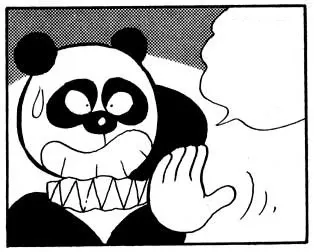
Oda went after what every aspiring manga artist pretty much needs to participate in:
Competitions
To be a manga artist, you pretty much need to do competitions. You don't have to win, but the people viewing competition entries are the same people that are going to be your coworkers and your boss if you do catch their attentions.
This was exactly the case for Oda, who, despite some weird drawing habits -
"My art style used to be criticized as really weird. I was very determined to be contrarian - a petty example: it was popular for girls at that time to curl their hair inwards, so I drew them curling outwards.
and having been in a car crash right before the contest deadline, managed to make Finalist at the Hop Step Manga awards with his first oneshot Flyboy, and then 2nd place at the biggest manga competition in the entire country at 17 years old at the Tezuka Award with Wanted! (which he submitted with a penname that can be loosely translated to MondayTuesdayWednesdayThursdayFridaySaturday)
What???
Oda submitted Wanted! under the penname 月火水木金土 (Tsukihi Mizuki Kikondo), each character corresponding with a different day of the week (with the exception of Sunday 日曜日) -
Monday(月曜日), Tuesday(火曜日), Wednesday(木曜日), Thursday(水曜日), Friday(金曜日), Saturday (土曜日)
In Japanese abbreviations are made by omitting 曜日 and just leaving the first character (equivalent to Mon, Tue, Wed, Thurs, Fri, Sat, and Sun)
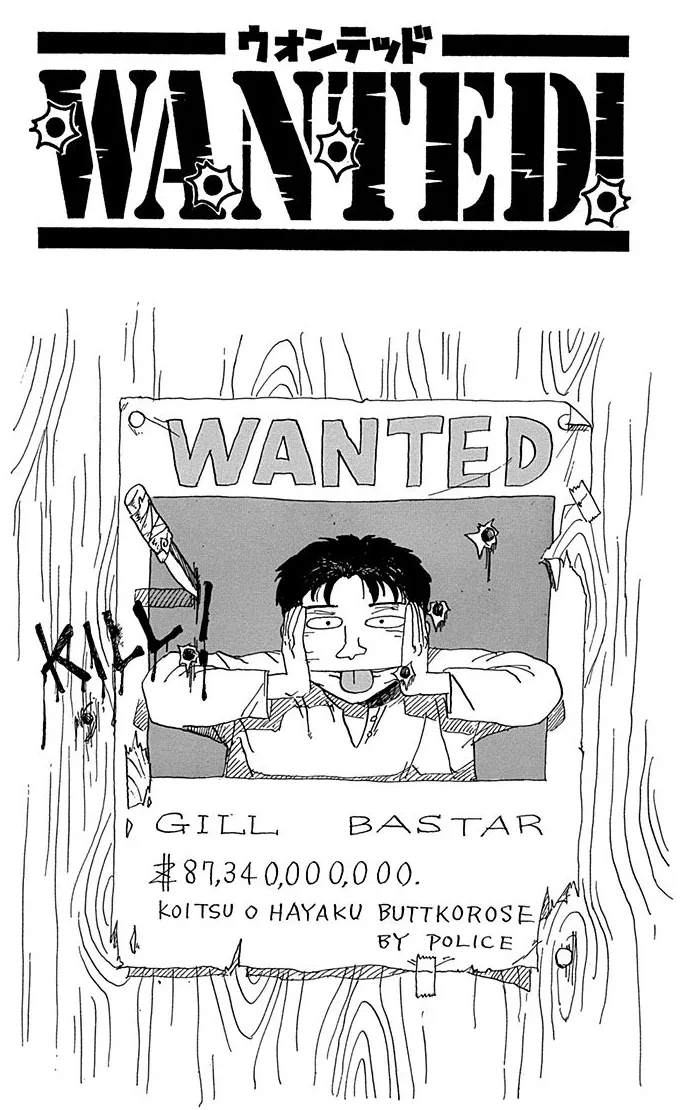
Having now gotten to 2nd place in the nation's biggest manga contest, Oda's career was seemingly set for launch. In fact all he had to do now was pretty much wait for an opportunity to come to him.
However, Oda wasn't happy. It wasn't enough. In fact -
It was never "Enough"
And would never be.
The first signs of Oda's perfectionism came through indirectly with his win of the Tezuka Award - because while even though he had just won 2nd place one of the most prestigious competitions in the nation, the award was related to the Monthly Shonen Jump publication, and not his favorite Weekly Shonen Jump
?? What ??
Many manga competitions' grand prizes, in addition to being seen by editors, etc, is having contestants' oneshots put in the actual magazine.
Shonen Jump by Shueisha is the most popular manga publication on the market, though that only applies to Weekly Shonen Jump - Monthly Shonen Jump is comparatively a much smaller magazine and because of that is considered less "prestigious" (whatever that means)
Likely feeling cheated at the time, Oda would go back to the Hop Step competition that he failed to win, this time with Ikki Yakkou, which involves a monk and a demon.
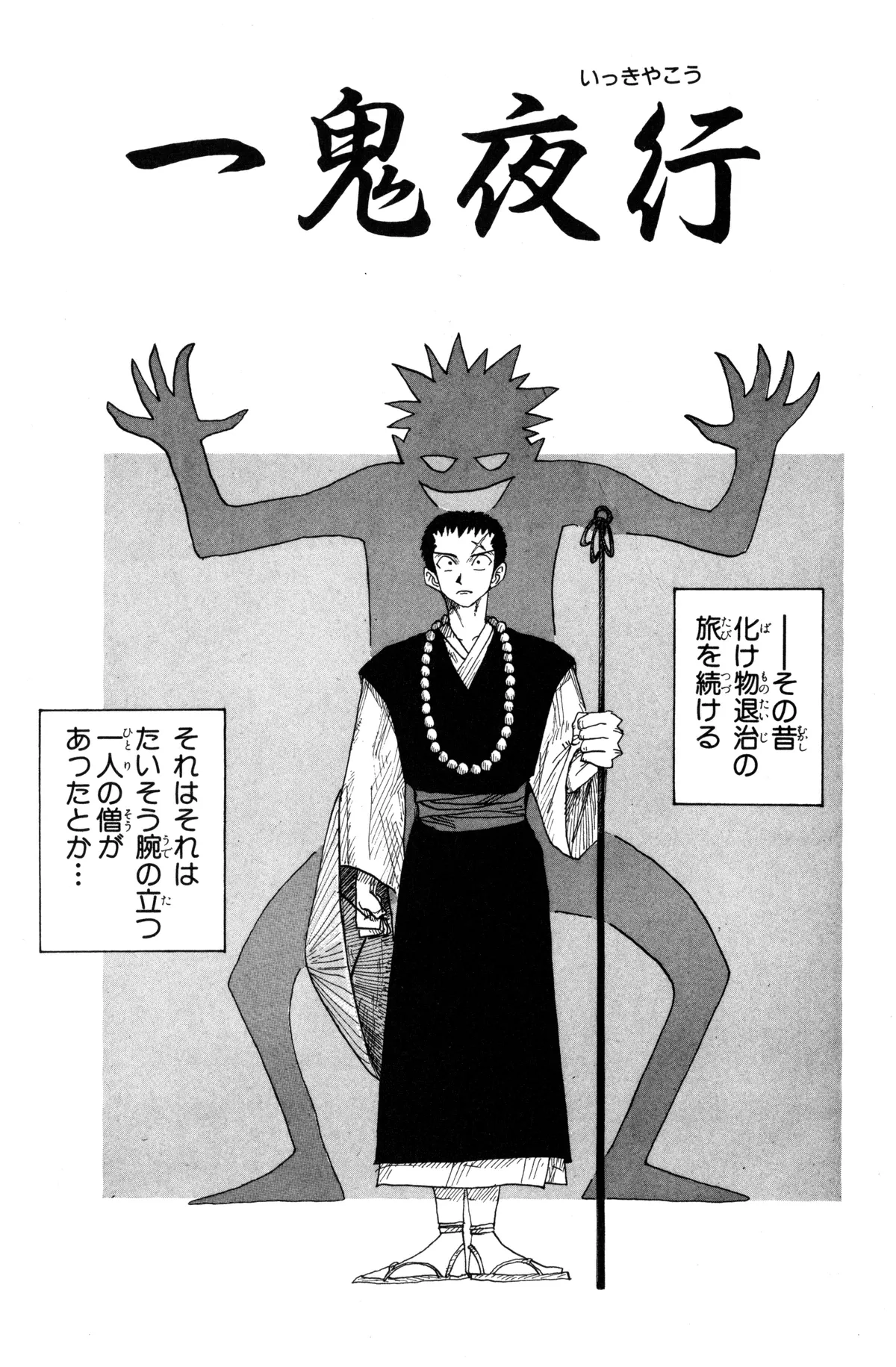
Turns out the people reading manga (and watching anime) really like Demons, and Ikki Yakkou was no exception as it gave Oda exactly what he wanted - 1st place. And with it, Oda's dream - to be featured in Weekly Shonen Jump (in a year...), alongside a future editor that would guide Oda along his journey to eventually becoming the hyper obsessive man that would create the biggest manga franchise in history.
Kojima, acting as Oda's editor, would come to be the person that pulled Oda back from the Brink and pushed him into writing One Piece - though, for all the retropsective fanfare, at the time Oda was pretty hard to like.
Kojima didn't have the greatest opinion of him, his future master manga artists wouldn't either, and he would even come to make the head of Shueisha's editing department hate him (though Oda didn't really have a say in that one).
It would be easy to say that Oda's bigass ego got in his way, but bigass is by and aways a ginormous understatement. So hyper obssessed was the now teenager that he said something to his parents that would get any of us regular people disowned on the spot:
I Wouldn't Go To Your Funeral*
*Sources debatable
After Ikki Yakkou's tremendous success in the Hop Step competition, Oda would go on to make a few more leaps in progress - getting his next oneshot Future Gift from God published in WSJ in the same year Ikki Yakkou won the grand prize.
After meeting Slam Dunk's own Takehiko Inoue and quitting his job at the local Baratei as a dishwasher (which, yes, is the inspiration for the Baratie ship that would later show up in One Piece) -
He didn't do anything. He ate more food than he actually did work - He was like a real life Luffy! - Tasaki, Chef at Baratei
Oda was pushed into college. Which, by some bizarre turn of events, wasn't actually a technical manga or art college, but just a plain old college. Whether his parents had a say in this happening we'll never know, but it's definitely one of the stranger occurrences in Oda's life considering he had gotten into the finalist position 3 separate times as a high schooler
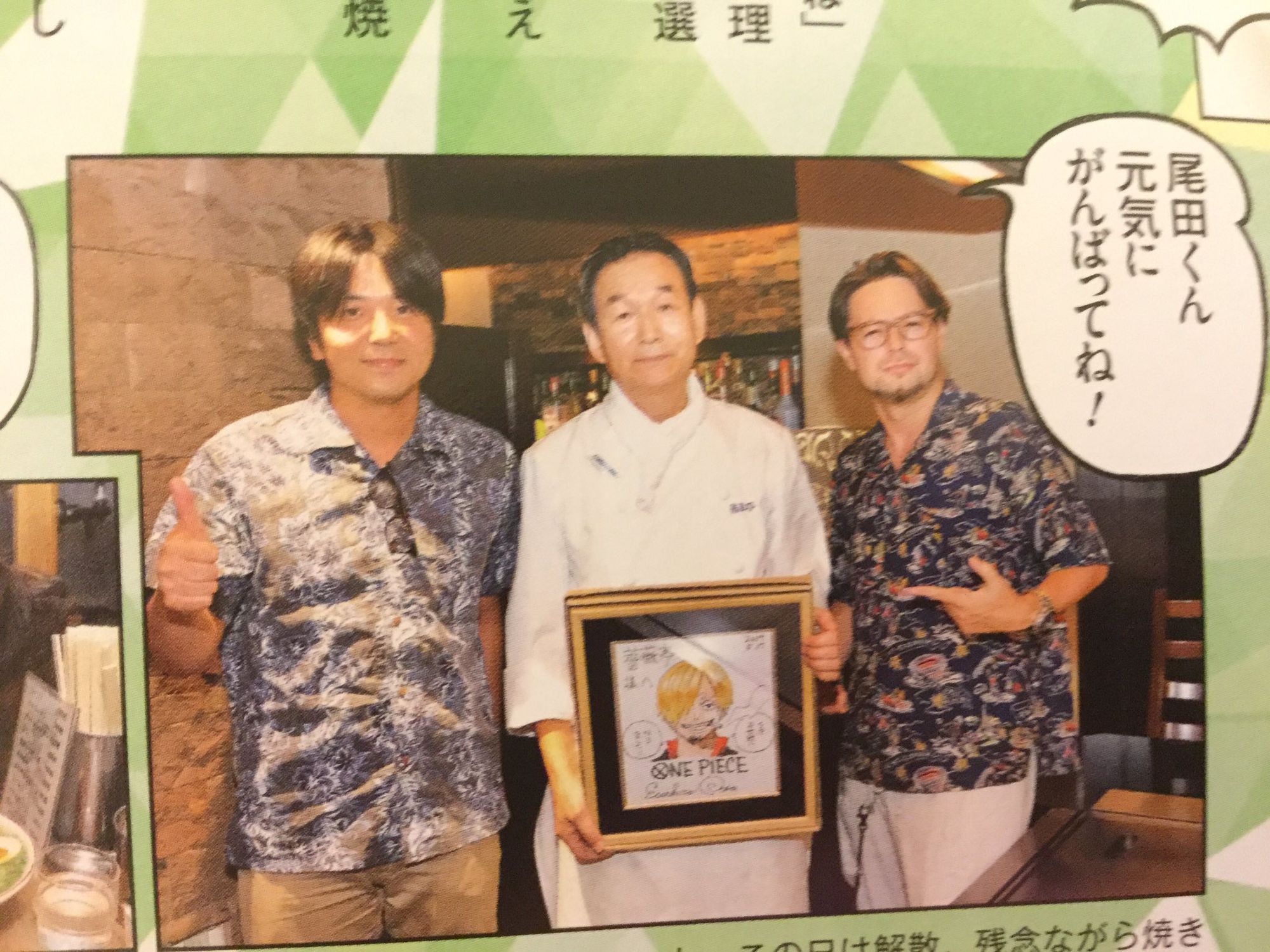
It goes without saying that the manga obssesed Oda didn't like normal college very much. In fact, his mental fell through the floor almost instantaneously given that he couldn't even be outward about his passion without fear of being hounded and bullied.
Keep in mind, this was the mid 1990s - anime and manga had not reached anywhere close to the levels of popularity it has now. As a result of hiding my passion, I felt an impending sense of doom - constantly. All the time.
Luckily for Oda the double edged sword of negative motivation didn't cut him down, as he ended up working harder and harder while in college in an attempt to get out of college. He wouldn't even last a year* before Ikki Yakkou was finally released in WSJ's 1994 Spring Special edition, causing him to drop out of college and begin packing his bags to Tokyo
*A year in College? Are you Sure?
Various sources, including interviews by Oda himself, have stated Oda's mental predicament in his short stint at college. However, when plotting it all on a timeline, the year Ikki Yakkou came out (1994) was the exact year Oda would've started college. To be honest I think I might've have just miscounted the years, but I'm putting this disclaimer here just in case
It was in this fiery zeal to get the hell out of college and into Tokyo where the (alleged) "I wouldn't go to your funeral" line was said by Oda to his parents. On one hand the extremity of the statement leaves it a bit questionable in validity, but on the other hand Oda's a bit of an extreme person anyways.
To Oda's luck (or unluck), the year 1994 would be the year that one of the most pivotal for manga artists at the time, as two of the top manga running in Weekly Shonen Jump were coming to a close. The ensuing years would see a lot of struggle and tussle between artists meant to work with each other, as each one fought viciously for what was seen as the throne of Manga.
A throne that was now up for grabs:
The End Of An Era
And the start of a war
For anyone who's read manga, seen anime, or even has passing peripheral knowledge of the subject, the name Dragon Ball is bound to be familiar.
Started in the 1984 by a then young Akira Toriyama, it fought its way straight to the top of the manga industry, as The #1 most successful manga in history (of course, up until that time).
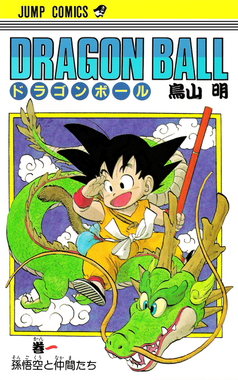
After having rough experiences with his stringent editor (who came to be the head of the editorial department at Shueisha when Oda was coming up), Toriyama's series would ride uncontested for over a decade before the original versions of the manga came to its official end,
in 1994.
This knowledge was actually well known to Oda and his mangaka contemporaries - after all it would be the same effect if the definitive end date of One Piece was announced. Everyone would hear about it, much less the people actually working in the field.
This meant that the #1 spot was about to be vacated, akin to a King abdicating from the throne. And because manga isn't a monarchical structure, this meant that the successing #1 could've been anyone. It could've been you. It could've been me. Or it could've been Oda.
Though, logically if #1 disappears then #2 becomes #1 right? And with Slam Dunk ending the year right after Dragon Ball, the xenith of the manga industry was experiencing a shakeup it had never seen before. Which makes the new more permanent successor to Dragon Ball make a little more sense:
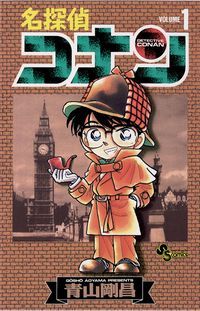
Though, the fact that Detective Conan of all things was now #1 didn't particularly sit well with Oda, or for anyone Oda worked around particularly. Given that Weekly Shonen Jump is a Shonen manga publication, the prospect of a mystery story being at the top was pretty weird
??? What's wrong with Conan? Short people aren't that hate-able are they???
Shonen Jump is fundamentally a magazine that features "Shonen" (少年) manga, which is equivalent to the term "young males." Given this, most people see Shonen Jump as the type of magazine to feature manga target towards the younger male audience which is why things like Dragon Ball, One Piece, and Demon Slayer do super well in the magazine.
There's various other magazine that feature various other genres like Shoujo (少女) and Bishoujo (美少女)that are targeted towards a young female audience and/or revolve around cute girls respectively.
Of course there's many more genres than that, from manga mags that focus on mysteries, horror, adult themes to mangas that only feature yuri, yaoi, NTR, but it happens that shonen is the leading demographic at the moment
This feeling, as it turned out, wasn't just a product of Oda being big-headed (though he definitely was big headed) - under the three master manga artists he worked as assistant to, there was always someone, whether it was the master himself or an assistant, that shared the feeling with Oda.
What everyone shared though, was an clear awareness that Oda's ego was getting in the way, and to put it down.
Fast.
"The Happiest Time of My Life"
Putting Oda in his place.
Oda only worked under 3 masters - Kaitani of Suizan Police Gang, Tokuhiro of Tar-chan, and Watsuki of Rurouni Kenshin, while getting instruction from his personal editor Kujima all along the way.
While it wasn't like Oda was getting instruction from the great Mr. Dragon Ball himself (who Oda generously referred to as "God"), just becoming an assistant to anyone was hard enough already. And as a still bratty teenager, Oda had a (sort of) right to be prideful of himself. Though that only extends so far:
When I first moved to Tokyo I thought I was better than everyone else. 'I'll just draw good and I'll [beat of all them]' I thought. And I believed it - back then I looked at all my competitors with disdain because I thought everyone else's stuff was less interesting than mine
This notion would not last for long - upon seeing what a true professional manga artist could do, Oda was taken aback by just how far behind he actually was -
When I began working with Kaitani, I was taken aback - [I] was shocked by the beauty of the pages [he drew], especially considering they were still drafts
Oda wouldn't stick with Kaitani for long, which probably left the mangaka with mixed feelings since he would later describe Oda as "a brat with no manners" - despite the fact that Kaitani was exceptionally nice to Oda to the point where he would watch Oda's favorite drama with him and even had dinner with the guy despite having conflicting work hours.

After telling Oda straight up that his art lacked any substance (correction - Oda's editor Kujima told him this, not Kaitani), the problem child was now passed on to Tokuhiro of Scenery of Tar-chan, who was not so forgiving. Either having heard of Oda's reputation (the professional manga world is quite small after all) or simply not having the patience to do with the "brat" Kaitani so described him as, Oda recalled his first true scoldings and lectures from Tokuhiro, who put the guy on blast for his frankly very mediocre art skills
Why do you draw your lines so thin??? If you put a lot of effort into your drawings, then readers will understand [what you're trying to get across].
Given now two sufficent kicks in the balls (and constant heated arguments with Kujima that the editor said made people think they were actually fighting) Oda's work started to improve dramatically. Within a few months of working for Tokuhiro, Oda would release MONSTERS, the first of many oneshots that he would put out in they year or so leading up to the release of One Piece.
It was also the oneshot that made Oda begrudgingly admit that perhaps his art did "lack substance," along with the very disturbing statement by Kujima that "none of the women [you draw] are cute."

Disturbed to the point where he couldn't sleep and stayed up all night drawing women, the reality check set in very very hard. After a few months at Tokuhiro's place, Oda bounced again to Watsuki of Rurouni Kenshin, who Oda still remembers fondly to this day, describing it as the "happiest days of his life." Watsuki would later run into trouble with the law after being discovered with possession of child pornography a decade or so later, but that's a story for another time.


For now, we can assume Watsuki is clean - and as he accrued the what was called the Watsuki School, a term later referring to the slew of famous manga artists that were featured in WSJ after working under Watsuki.
Although he was worried if Oda could really even do anything when he first entered his brigade, Watsuki's worries were somewhat put to rest because of the work Tokuhiro and Kaitani (and unlucky Kujima) put in before him.
This doesn't mean that the reality checks didn't stop coming though - in fact, the period between MONSTERS and the One Piece prototype Romance Dawn was the lowest point in Oda's professional life, setting the stage for one of the arguably the most important series of events that would befall the manga industry.
A series of events that seemingly no one talks about, because well - he's Oda, man behind One Piece. How could he have possibly struggled with anything?
Close calls with Death
The End of Eiichiro Oda
As is typical with most manga assistants, Oda was working on own stuff alongside doing assistant work for Watsuki - putting out a slew of Oneshots between the years of 1994 and 1996, starting with the aforementioned MONSTERS.
These oneshots however, are all hard to come by because well - they never got published. All that's known about them is that they existed through various interviews and sources, and more importantly - they were all complete failures.
This with the fact that now Oda was determined to take Detective Conan down out of its place at the throne of the manga industry meant that he was relentless at his output. It was failure after failure after failure, but Oda would not stop going. While assisting Oda through the process, Kujima was even surprised at the rate at which Oda seemingly could put out oneshots endlessly, with complete disregard for any emotions that came with being shot down over and over again.
Eventually though, the superhuman front Oda was putting up began to crumble. Constant rejections isn't good for anyone's mental, let alone someone who had pretty much tied their self worth (whether out of choice or necessity) to the very things that were getting sent back to him with giant red stamps of failure on them.
Even worse for Oda was the fact that his now spiraling mental health was actually the least of his concerns. Unbeknownst to him, the former editor of Dragon Ball turned Chief Editor of the Shueisha Torishima didn't particularly like Oda's work. Whether it was personal or simply a disdain for Oda's style (or a disdain for just being in the position of Chief Editor), Torishima was a D1 Oda Hater and seemingly put down every single attempt Oda made to get into Shonen Jump at all.

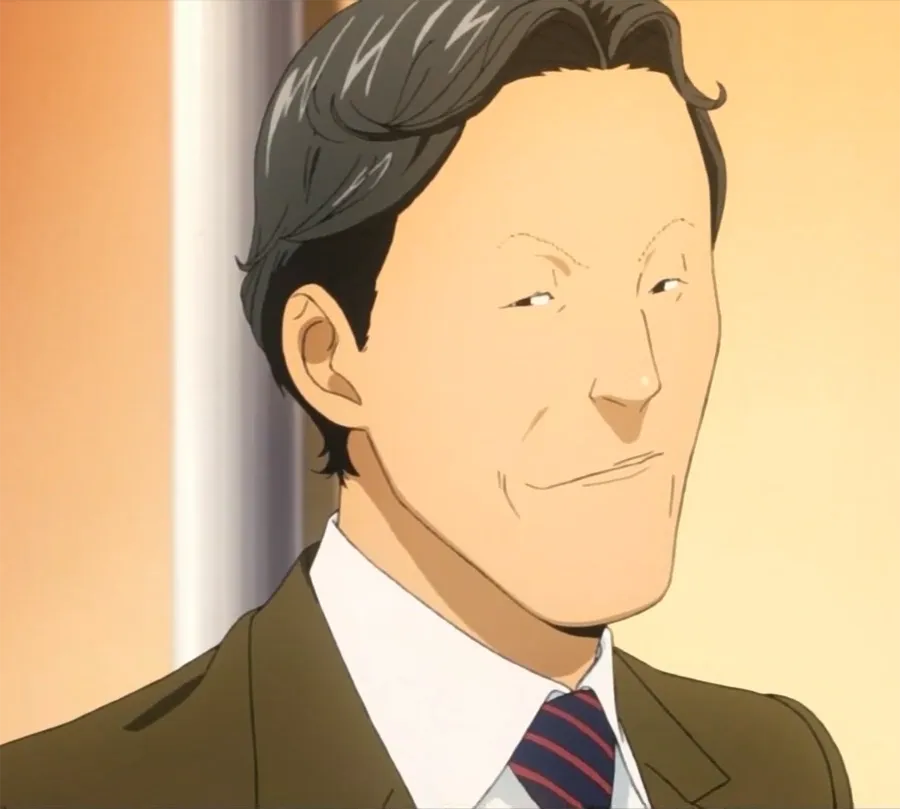
With a confidence that was quickly eroding into self-hatred and self-pity, it wouldn't be long before Oda came face to face with the death of his very career. In the final few oneshots before Romance Dawn, Oda would be almost incapacitated with grief after every single rejection that came through - yet still grinding out more stuff to just be incapacitated again.
It would be after a final unnamed rejection that left Oda out for nearly a week that he called in a meeting with Kujima to discuss something that he thought he would never have to discuss:
I Give Up.
"If I quit now, there's still time to be a salaryman, right?"
Meeting in their usual spot, Oda came to Kujima with one goal: to announce that it was over.
Having seen too many failures to count despite working harder than he had ever had in his life, Eiichiro Oda - confidence and self-worth now destroyed beyond recognition, just wanted an escape from it all.
From the young bratty teen that had placed so high in some of the most prestigious manga competitions in Japan, and then dropped out of college to move to Tokyo and work with some quite famed manga artists as their assistant, it was a fall from grace that no one was expecting - much less Oda himself.
However, faced with the reality that he was now definitively a failure, he went to Kujima to announce his end.
Kujima though - he wasn't particularly taking any of it.
Sure, he wasn't actually on the ground, making manga day in and day out to just be rejected over and over again; he wasn't the one who's mental health was destroyed and will left comatose week after week after week, but that's precisely editors are there to be.
And as an objective point of view, Kujima wasn't ready to just let Oda go so easily. He saw potential in the guy - that's why he decided to pair up with him and more importantly stick with him through all the years where Oda would bitch about Kujima complaining about everything even though Kujima was just pointing out what was deficient in his art skills.
There was potential here. An extraordinary potential that had to and needed to be brought out of the hardest working manga artist Kujima had ever known
[I've never seen someone who has worked so hard despite so many failures, and just keeps going. Truly.]
In the grand scheme of things, this compliment wasn't particularly all that great. In fact, the reason that there's brackets around the entire thing is because the actual original quote read "I've never seen someone work so hard yet have nothing to show for it." And honestly, if I was in Oda's shoes and was told that, I'd probably had quit even faster, so I decided to take the most generous interpretation of that quote imaginable.
The small scope of the compliment didn't matter though - it gave Oda what he so desperately needed: reaffirmation.
Though it wasn't like Kujima said some magic words and lo and behold everything is now sunshine and rainbows - Oda was still forlorn.
But at the end of the day, it didn't matter - Kujima had managed to block enough of the rain over Oda's proverbial fire that he had bought valuable time for Oda before he would decide to quit once and for all.
It was not a lot - Oda was still resolute on quitting. But he decided to give it just one more go. Thinking back to all the sketches of pirates and adventures that he had conjured up through out the years after watching Vicky the Viking tell her father that she was "setting sail at dawn," Oda decided it was time to dig out what was for him his most prized possession:
An idea. About a manga about adventure and pirates.
Kujima would take his leave sometime around this period, leaving only Oda as the existing remnant of the duo.
The sun was about to set on one of the most important events in the history of Japanese manga.
Twilight
Romance Dawn had a troubled upcoming.
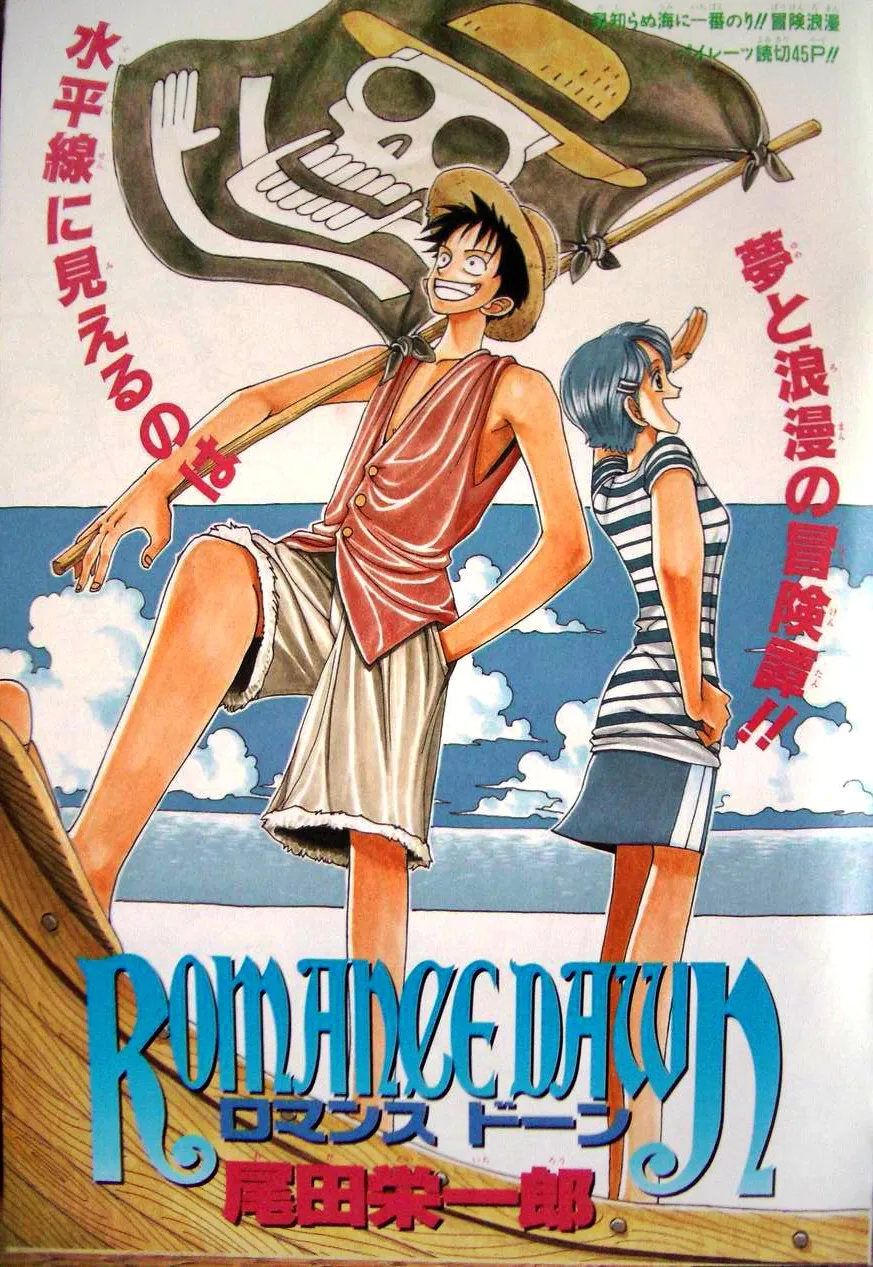
In the midst of the lowest period of his life, Oda would work with his new editor Asada to make sure this was the best thing he'd ever output in his life. After all, if Oda was going to quit, he might as well quit knowing that he tried his damned hardest.
This sentiment was shared by Asada, who starting with Oda would become known as probably one of the most fervent supporters of manga artists he'd ever took under his wing.
So confident in Oda's potential that when Torishima rejected Romance Dawn as just another piece of Oda's to push away, that Asada actually pushed back.
In fact, Romance Dawn underwent three revisions on three separate occasions, each time being rejected by Torishima and then brought back by Asada who is absolutely determined to get this thing through into the magazine.
While in retrospect, you can very likely predict the outcome (based on the fact that One Piece actually exists and that Asada, over the period of his career, saved other quite famous manga artists from dropping out of their career), at the time the situation was anything but certain.
Eventually though, Torishima would fold. Begrudgingly of course, and after 3 tries - the Chief Editor finally decided that the oneshot met the quality of the manga that came out on WSJ - though barely. Even as Oda's last oneshot came into publication, Torishima had mixed feelings on not only Romance Dawn itself but the fact that he even let the thing through in the first place.
Luckily for Oda, Romance Dawn did well. Whether it was because Shonen Jump didn't have a pirate manga even though their logo was a pirate...?
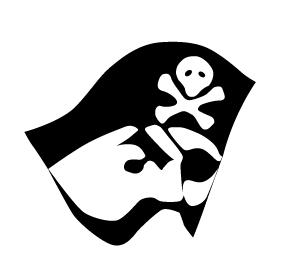
I thought it was strange that Shonen Jump didn't have a pirate manga. Their logo is literally a pirate! - Oda
Or otherwise, Oda eventually got the greenlight to expand on the concept of Romance Dawn in a new manga serialization that would hit the magazine in 1997.
Seeing now the light at the end of the storm, Oda worked furiously to make sure this was the best hail mary the world had ever seen. After receiving feedback from multiple editors and staff from Shonen Jump about the state of Luffy's eyes (no further was divulged on this matter), Oda released, unbeknownst to the world, the true successor to Dragon Ball - a manga that would hold the throne of the industry across the turn of the millenium, and still holds the throne firmly in its grip some 30 years after it debuted.
And even though coincidentally the magazine had been dethroned from its #1 popularity position in Japan (something that irked Oda quite a lot), history was made.
One Piece was born.
1997.
Admittedly, One Piece wasn't just some kind of bizarre turn of luck -
Oda had put a lot of thought (as always) into how he would present his new pirate manga, one of the more important decisions being that he would only use vibrant primary colors to depict the characters and scenery because that's what he felt was most appropriate for the audience.
In fact, Oda had almost engineered One Piece to target the youngest audience imaginable - with a resolution to never have violence and every fight to end with a big celebration and party, his principle was to target those kids growing up as they had their lives ahead of them. And being part of someone's childhood and nostalgia trips as they grow up is one of the most powerful emotional forces that any IP or person can invoke to solidify their fame. I mean just look at when PewDiePie got married and/or had a child or when Smosh finally reunited after some 6 years of being torn apart by outside forces - nostalgia is enormously effective.
Given this, the aftermath of One Piece in the following years is not so surprising. Though that's in theory obviously - even if Oda knew consciously (or unconsciously) what he was doing, it was still a surprise to him that people were falling in love and getting married because of a shared connection and passion for the thing that Oda used as his last resort.
Speaking of getting married, the topic of One Piece's bizarre longevity comes into mind - not only to anyone that's heard of the now 1000+ episode anime or however many chapter manga it is (it is too much to count) - but to Oda himself.
I expected One Piece to last 5 years. I promised my now wife that I would finish it in ten, and then we could go on a round-the-world adventure. Needless to say - it has been more than 10 years
Which then begs the question -
How?
Out of Control
The manga that took over it's author's life
Perhaps one of the reasons One Piece grew so long was because Oda already knew how it would end.
In fact, every time Oda got a new editor (which was a lot of times), he would lay out the entire storyline of One Piece from beginning to end for them to gather their feedback.
Unfortunately for his editors' sanity, Oda was pretty enthusiastic about brainstorming ideas and getting that feedback. Though, Oda was more of a thinker than a talker - resorting to extremely long periods of silence where he would be formulating things in his head before saying it out loud (or drawing it on paper), which meant that the phone calls that he had with editors were just long periods of complete silence.
And the fact that Oda had so many ideas he needed to ruffle through in his head meant that these phone calls - they were long. Long to the point where they would go into the night. And then out of the night. Which caused many editors to fall asleep on the line with the guy.
Luckily, Oda's not cruel - in fact he described as a big teddy bear by the people that worked with him, and at one point he walked into a convenience store with a $100 bill to buy an oden or something (typically costing somewhere around $5) of the sort and just left the entire bill as the tip
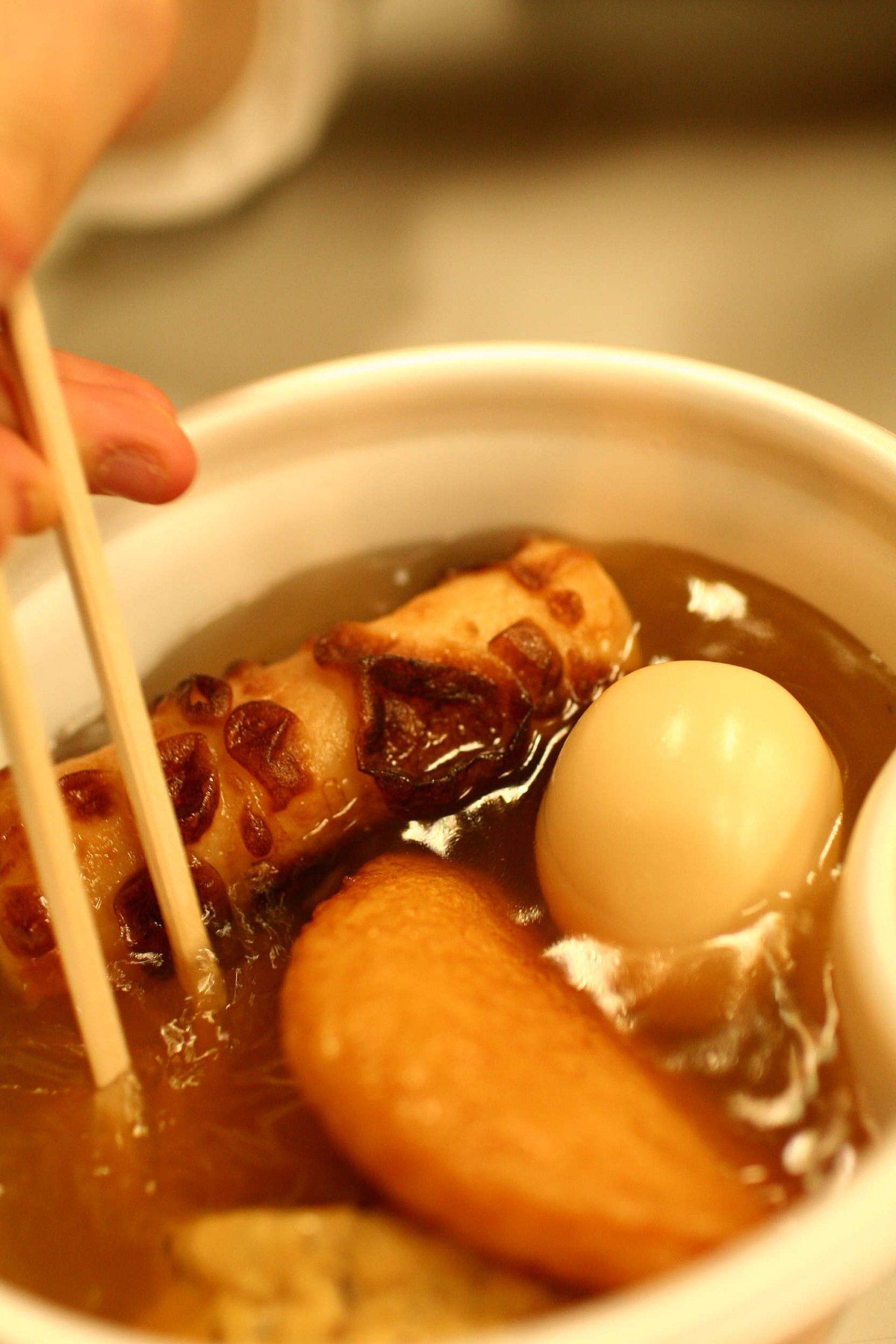
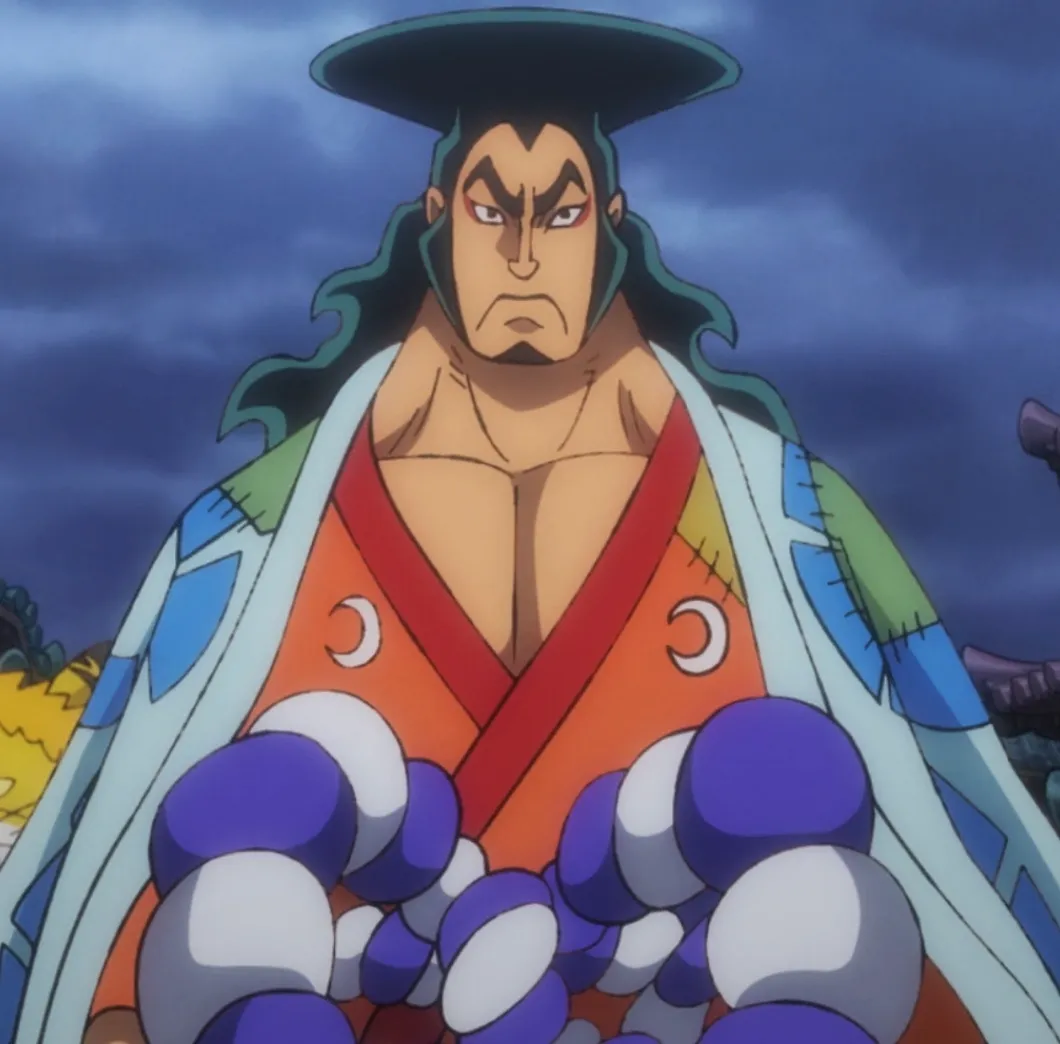
Granted that last bit might have been just an unintentional flex by Oda because at that time he was rich beyond his mind, but his niceness extends beyond just vanity. In fact, everytime he gets a new editor, he vets them to see if their life would actually allow them to be his editor
I ask my editor - whenever I get a new one - one question: Do you have a girlfriend/Wife? - Oda
Regardless, Oda would eventually get an editor to his specifications (because it's Oda), and would begin filling in One Piece like drawing a line from A to B; because he knows how it's going to end, and he already drew how it would start. So the act of actually making the story is essentially deciding whether or not he wants to take the straight route to the end, or the curvy route with another arc.
And another.
And another.
Oda, well he can't particularly help himself. With so many ideas swirling around in his head he has to let them out somewhere, and as much as he has the stacks and stacks of notebooks he burns through like candy, those books aren't powerful enough to contain those ideas. They have to go on the paper.
And on the paper they go - more characters, more places, more stories to tell, that's dragged One Piece out from the 5 year series he planned it to be, the 10 year affair he promised it'd be to his wife, to this 30 year behemoth that still hasn't ended.
Oh, and speaking of candy -
Only Eating Chocolate.
Surely that's not healthy?
I've said that Oda's manga habits are kind of insane, but I don't think I really illustrated how truly insane it actually is. In fact, even though Oda already doesn't get much sleep beyond his standard 3 hours a night, in the days leading up to the deadline where he has to submit his manga manuscripts to Shueisha, he doesn't sleep at all.
In fact, he doesn't eat at all. As the staff at Shuiesha describe him:
[He's] usually cheerful, but when a deadline is approaching he stays up all night drinking only water and eating chocolate to prevent drowsiness
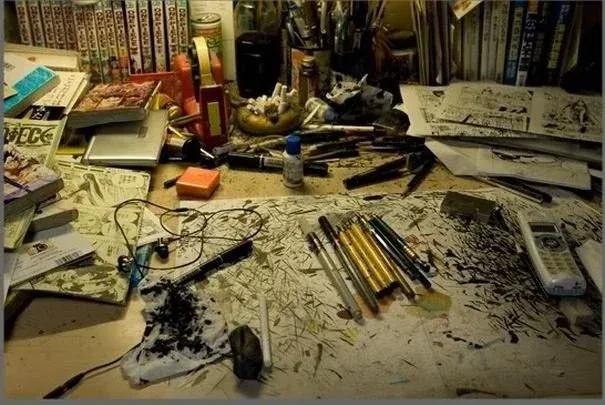
This is probably one of the reasons why so many consider the guy superhuman, as do I to an extent. There's not a lot of people who can live off 3 hours of sleep, let alone then pull all nighters and then not eat or drink anything for days at a time.
As it turns out though, Oda is not completely superhuman. After 26 years of the habit, Oda was suddenly hospitalized in 2013 for 2 weeks which sent the entire manga industry into a temporary panic as the fate of their star figure was uncertain.
This, along with the hospitalizations of more manga artists around the same period, caused Shueisha to eventually call for what was essentially a week or two of PTO for any manga artist that wanted to take it (though most of the time they don't, because the type of person who wants to be a manga artist is the exact same type as an obssessed workaholic pretty much).
The health problems didn't stop after his tonsillectomy though - in fact, Oda's body has been feeling the consequences of his crazy work habits ever since then. In fact, why don't we just let Oda describe it himself:
When it comes to mangaka, there are those who lose weight and those who gain it. I started immediately getting fat as I started [One Piece]. It was common for me to not eat for 2-3 days, and I didn't even have the time to eat because I would feel sleepy while eating. That's why I usually don't eat as much as other people.
I can push myself working without eating or sleeping for days thinking about that final payoff and rewarding myself with a giant luxurious dinner or BBQ at the end.... Still I don't eat, I just gain weight and lose at everything... I really don't enjoy talking about this.
Before COVID I went out a lot too - to play soccer with friends. But I realized that my body just could not take that kind of activity and I was forced to abandon it.
He even admitted it speaking to the man he was once so furiously trying to take down - Aoyama of Detective Conan
The older you get, the harder and more tiring it is to draw [manga battle scenes] isn't it?
That's not to say Oda still wants to take down Aoyama. Past the fact that he already did take him down, Oda has since matured and mellowed out from the insolent brat his masters described him as and made friends with a lot of the people that would once view as his competitors. In fact, he even made some observations about it
I felt like a weight was lifted off my shoulder [when I stopped seeing others as rivals]. That's why I don't mind others' mangas.
Though, I do feel like Jump probably shows surveys to the manga artists just to provoke their fighting spirit
Survey? What survey?? Can I take the survey???
The "survey" you'll hear almost every manga artist talk about is the readers' survey that Weekly Shonen Jump puts out with every edition of the magazine.
To avoid getting into specifics, it's essentially a big popularity contest where readers rank their top 3 manga and they data is aggregated to show who's at #1 and who's last.
Manga artists who are in the double digits for consecutive weeks risk having their series cancelled.
So yes, you can take the survey - you just have to get a hold of a copy of the weekly WSJ mag and then you'll be able to submit your opinions
He even made friends with fellow manga artists that were fans of his.
Like Kishimoto.
Kishimoto?
Like, Naruto's Kishimoto?
Oda and Kishimoto of Naruto have actually been friends for a long time.
In fact, Kishimoto himself was a self-admitted Oda fanboy
What part of One Piece do I like? I like ALL OF IT! - Kishimoto
After Kishimoto got his own breakthrough, the two met at a party where Kishimoto, now up and coming manga artist himself, was awe struck as he saw the man that had held perhaps the most meteoric climb up the manga ladder in history. Even better was the fact that the two were born at the same time and actually debuted at the same time as well.
The two would become good friends soon after, and Oda would see Kishimoto's company as invaluable through the ups and downs of his own life -
I really appreciated having Kishimoto by my side when I was going through my life's rough patches
So deep was this friendship that the two actually purposely altered their manga in some way for the other out of mutual respect. For example, Sanji was originally supposed to be named Naruto too, because of his one definitive curly eyebrow, but out of not wanting to impede on any of Kishimoto's territory, Oda changed his name to the one we know today:
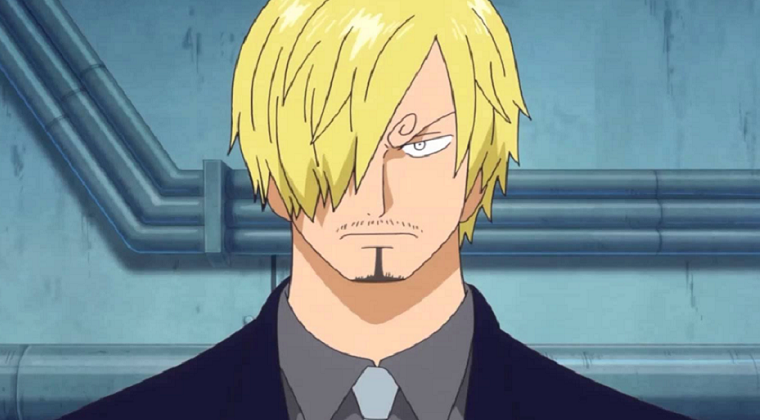
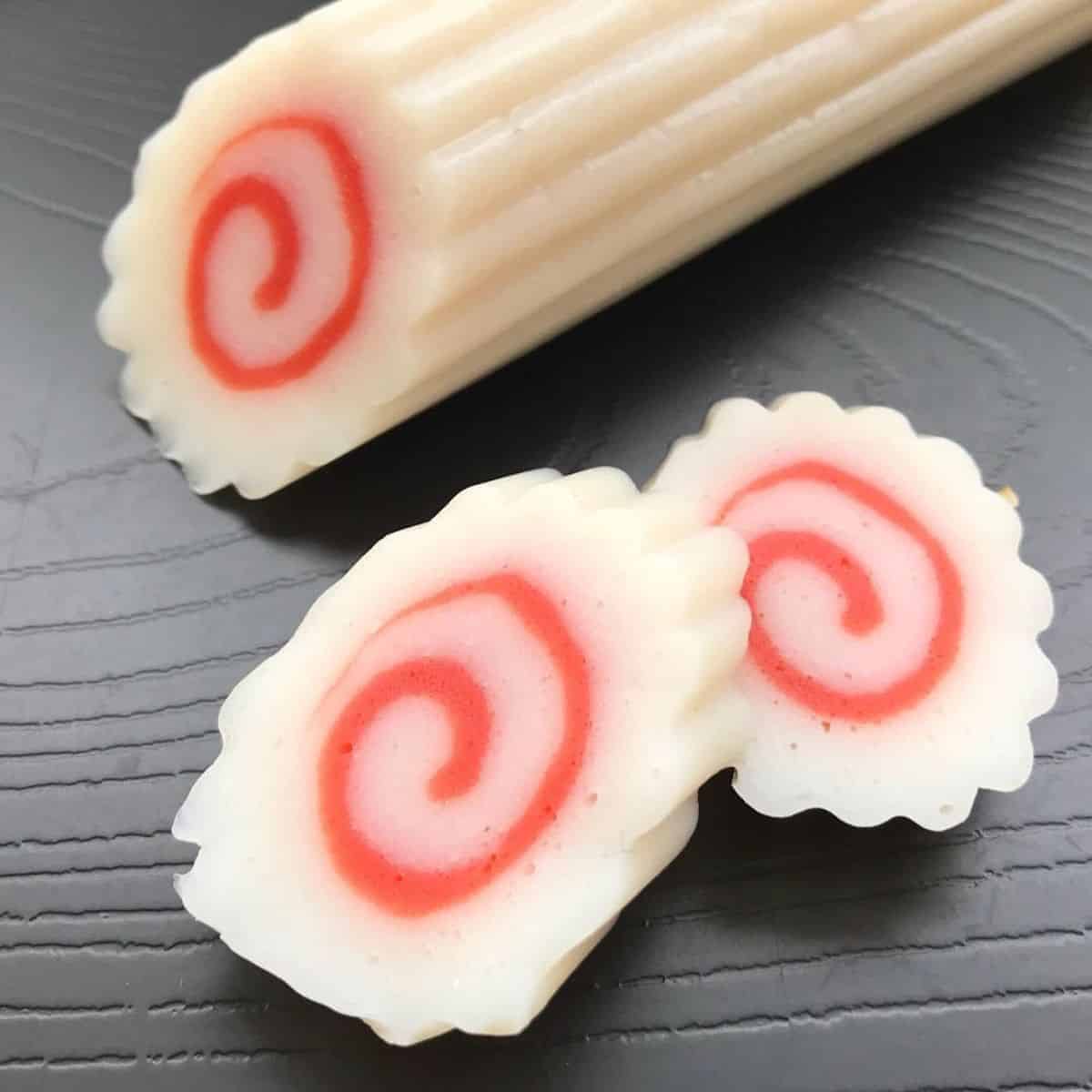
Kishimoto on the other hand, elected not to use the color red as a dominant color in Naruto because he felt that red was "Luffy's color." In fact, after hearing Oda was going to name Sanji Naruto, he said that he wished he knew because he would've gladly gotten out of Oda's way
I would've changed Naruto's name to 'Menma' or 'Shinhachiku' and rethought the symbol if I knew Sanji was supposed to be named Naruto
Which, as someone who's favorite anime is Anohana, the notion that Naruto in another timeline would have been named Menma instills an emotion in me that I don't particularly know how to describe to be honest.
The respect would not stop even when Naruto ended. In fact, Kishimoto wanted his next series to be something about clouds,
I love clouds - Kishimoto
But after realizing that Oda had already used clouds in his manga (?) for his Skypiea Arc, Kishimoto got upset because now he couldn't use that theme.
Calculations and respect aside though, sometimes conflict would just be unavoidable:
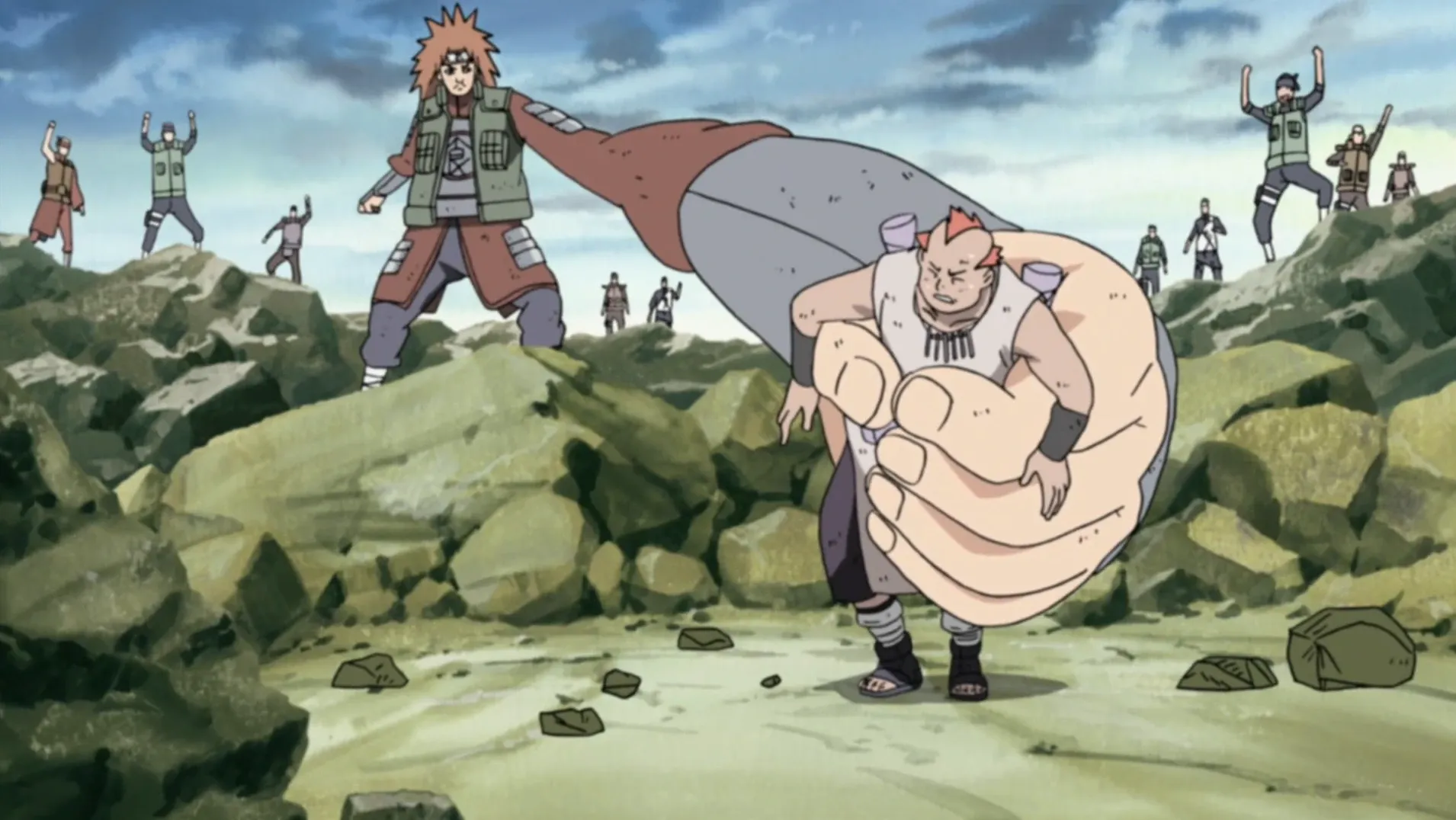
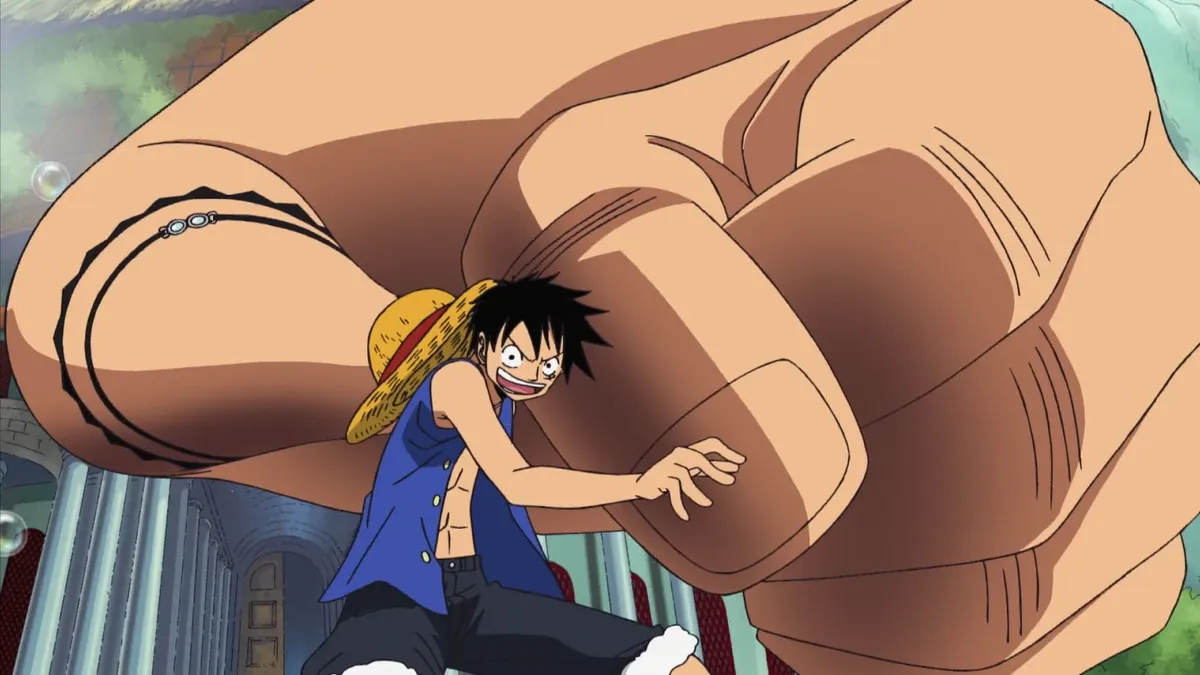
In fact, if given the choice Oda would've probably changed Luffy's Giant Pistol to avoid similarities to Choji, but since it was already written Oda couldn't particularly do anything about it besides warning Kishimoto about it.
This friendship was probably not well known to the general public outside of a few interviews until Naruto reached the end of its original manga run - whereby Oda (and seemingly all of the editorial staff in Shueisha if the sources are correct) felt that it was necessary for him to draw some sort of tribute to the end of one his good friends' mangas.
Having approached Kishimoto's former editor (now media coordinator) insistent on doing something for the end of Naruto, he eventually decided on this (and Kishimoto decided to pay back Oda as well) -
Oda meant for the references to Naruto in chapter 766 Smile to be subtle (apparently). I'm not particularly sure what the definition of subtle is for Oda but we'll assume it's more generous than ours:

Upon the end of Naruto Kishimoto would remark that the sky and water seemed clearer and bluer than before, whereby Oda would immediately respond with something that can only be classified as Oda-like
I don't know what you're talking about. The sky's always brown to me. There's never been any good ideas that come from being outside.
There was probably a good reason it seemed this way to Oda though - and it had something to do with the fact that he decided to pick up the job of movie director along side his regular job
"It's Just A Side Gig"
Right? Movie directing can't be that hard right?
It isn't every manga gets an anime and every anime gets a movie unless it's really popular. And well, One Piece was definitely popular enough.
Oda's production would begin with the One Piece anime, where even back in the manga stages he drew Luffy imaging one specific voice actor playing him - Mayumi Tanaka.
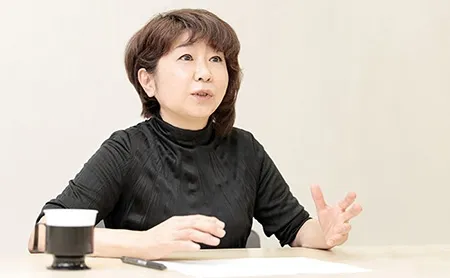
The thing about anime production is that while the manga artist obviously has some control over the subject, it's a completely different world fundamentally. Oda, even though he was the star manga artist of the industry at the time, wasn't guaranteed any amount of control over any sort of anime and/or movie adaptation. That control would more be a courtesy provided by the production committees and others that actually provided the obscene amounts of money that providing anime require.
So it came to a shock to everyone, let alone Oda, when he actually got his wish.
Over a round of drinks with the then directors of the future One Piece anime Shimizu and Uda (Uda, who was in the operating room as his wife was giving birth when Shimizu texted him about the news) decided that indeed, Tanaka would be the voice actor for Luffy.
This string of luck wouldn't stop however - it was only after a few years that the first One Piece movie, One Piece Strong World, was brought before Oda and the crew as a proposal.
Though at this time, it was as much a proposal based off One Piece's success as it was maintaining it.
As the One Piece anime dragged on, the popularity of it actually started to flatten a little bit. In fact, seeing that One Piece had now been on for nearly a decade, the anime which was necessarily going to be just as long saw its initial enthusiastic team replaced with new members as time ran its course.
Though Oda was - at first - somewhat reasonable about his involvement in the movie:
No. That's too much
However, Shimizu would not let up, to the benefit of the movie and to the detriment of Oda. After sweet talking Oda into taking a trade where Shimizu would guarantee Oda's favorite band (Mr. Children) would play the theme, Oda would become the new director for the movie.

Given that movie director is typically a job people take full time, Oda immediately felt the gravity of his decision - yet, he was still Oda.
Perfectionist.
Which meant that when he finally finished the first draft story and storyboard for the first One Piece movie, which was called The Crystal Ship's Logs at that point, he realized that he actually hated every bit of it.
How do you write a movie? I didn't know, so I just tried to match what everyone on the team was expecting the movie to look like. But at the end of it all I realized I just didn't like it. I knew that if I wanted to turn this in as something that I said I enjoyed writing, the whole thing would've been a lie.
Now at a crossroads where he could stop killing himself over being a movie director and manga artist at the same time, Oda took the only path that was acceptable to him.
He ditched the entire thing and rewrote it.
This decision likely was just as important as Oda's decision to write One Piece at all, because One Piece Strong World would gross $5 Billion, marking its place not only in the Guinness book of World Records, and likely changed the trajectory of One Piece from an attritioning series to one that still rides high to this day.
Oda? Well he thought it was all just luck. But no matter what he thought, it didn't matter.
He had now gone from simply a manga artist at the top of the manga world to a manga artist with a legacy.
And past all the other things that happened in Oda's life -
past donating to earthquake stricken areas in the wake of the great Kanto quake,
past being voted Japan's favorite manga artist multiple times,
past the movies, the money, the fame, the glory,
Oda keeps working.
Because fame, money, legacy - well, it was never why he started this journey in the first place.
4 year old Eiichiro Oda just didn't want to work:
He just wanted a job that he could enjoy.
